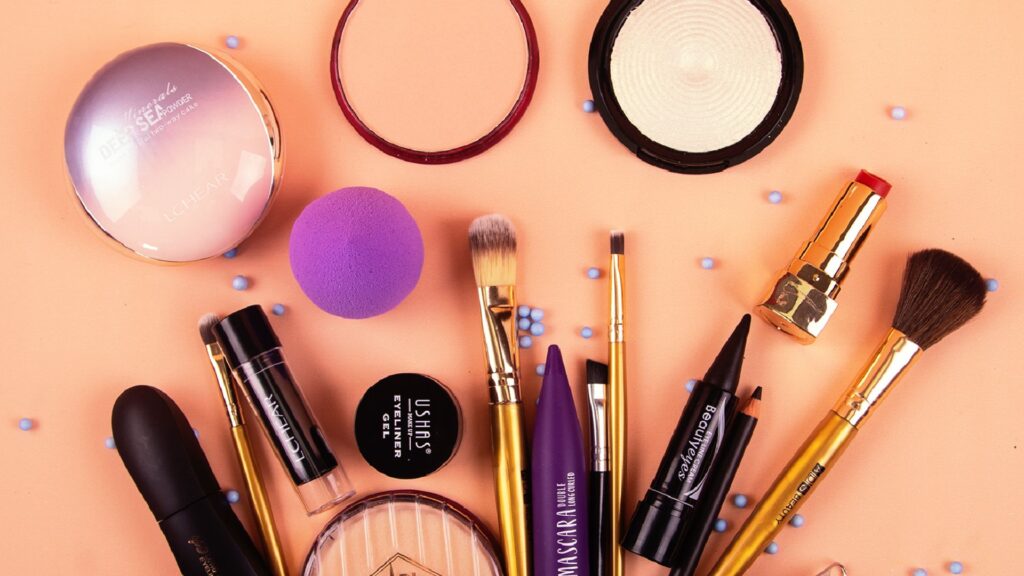In the realm of e-commerce and digital marketing, high-quality product photography is crucial for attracting customers and driving sales. However, even the most carefully curated photos can suffer from color discoloration, which can detract from the overall appeal of the product. Understanding how to effectively correct these color issues is essential for maintaining a professional image and maximizing conversion rates.
Understanding the Importance of Photo Color Correction
When customers browse through online stores, they rely heavily on product images to make purchasing decisions. Vibrant, true-to-life photos can instill confidence in the product and reflect positively on the brand. On the other hand, photos with inaccurate colors or unappealing hues can create doubt in the minds of potential buyers and lead to lost sales.
Common Causes of Discoloration in Product Photos
Color discoloration in product photos can stem from various factors, including:
- Inaccurate white balance settings during photography
- Poor lighting conditions
- Variations in display calibration across devices
- Camera limitations or settings
- Image compression during editing or uploading
Tools and Software for Photo Color Correction
To effectively correct color discoloration in product photos, you’ll need access to the right tools and software. Fortunately, there are several options available, catering to both beginners and experienced professionals.

Overview of Popular Photo Editing Software
Adobe Photoshop
Adobe Photoshop is a versatile tool that offers comprehensive features for color correction, including adjustment layers, curves, and selective color adjustments.
Lightroom
Lightroom is another powerful tool, especially suited for batch editing and non-destructive adjustments. Its intuitive interface makes it ideal for photographers of all skill levels.
GIMP
GIMP is a free, open-source alternative to Photoshop, offering many of the same features for color correction and image editing.
Online Tools for Quick Fixes
Canva
Canva is a user-friendly online platform that provides basic photo editing tools, including color correction features.
Fotor
Fotor offers a range of editing tools, including color correction presets and filters, making it ideal for quick fixes.
Pixlr
Pixlr is a web-based photo editor with both basic and advanced editing features, including color correction tools.

Techniques for Correcting Color Discoloration
Correcting color discoloration requires a combination of technical knowledge and artistic judgment. Here are some essential techniques to master:
Adjusting White Balance
White balance adjustment is essential for ensuring accurate colors in your photos. Most photo editing software provides tools for manually adjusting white balance or using presets based on different lighting conditions.
Exposure Correction
Exposure adjustment allows you to fine-tune the brightness and contrast of your photos, helping to correct overexposed or underexposed areas and enhance overall image quality.
Contrast Adjustment
Contrast adjustment helps to increase the visual impact of your photos by enhancing the difference between light and dark areas. This can help improve the clarity and definition of your product images.
Saturation and Vibrance Correction
Saturation and vibrance adjustments allow you to control the intensity of colors in your photos. These adjustments can help restore faded colors or tone down overly saturated areas for a more natural look.
Targeted Color Adjustments
Many photo editing software programs offer tools for making targeted color adjustments, allowing you to selectively modify specific hues or color ranges in your photos.
Step-by-Step Guide to Color Correcting Product Photos
Now that you understand the key techniques for color correction, let’s walk through a step-by-step guide to correcting color discoloration in your product photos:
1. Importing the Image
Start by importing your product photo into your chosen photo editing software.
2. Assessing Color Issues
Take a close look at the photo and identify any color issues that need correction, such as inaccurate colors or color casts.
3. White Balance Adjustment
Adjust the white balance settings to ensure accurate color representation in the photo. Use either manual adjustments or presets based on the lighting conditions in which the photo was taken.
4. Exposure Correction
Fine-tune the exposure settings to ensure optimal brightness and contrast in the photo. Adjust the exposure slider or use tools like levels or curves to make precise adjustments.
5. Color Correction Using Curves or Levels
Use curves or levels adjustments to further refine the color balance and tonal range of the photo. Make subtle adjustments to the red, green, and blue channels to achieve the desired color balance.
6. Fine-Tuning with Hue/Saturation
Use the hue/saturation adjustment tool to fine-tune the saturation and vibrance of specific colors in the photo. Make adjustments to individual color channels to achieve a natural and pleasing color balance.
7. Exporting the Final Image
Once you’re satisfied with the color correction, export the final image in the desired file format and resolution. Be sure to save a copy of the original photo for future reference.

Best Practices for Effective Color Correction
To achieve professional results with color correction, keep the following best practices in mind:
Consistency Across Product Images
Maintain consistency in color and style across all product images to create a cohesive and professional-looking online store.
Keeping it Natural
Avoid over-processing your photos with excessive color correction. Aim for natural-looking colors that accurately represent the product.
Retaining Details
Be mindful of preserving important details and textures in your photos while making color corrections. Avoid over-sharpening or noise reduction that could compromise image quality.
Using Adjustment Layers for Non-Destructive Editing
Utilize adjustment layers in your photo editing software for non-destructive editing. This allows you to make changes without altering the original image data, preserving flexibility and control.
Case Studies: Before and After Color Correction
Let’s explore some real-world examples of color correction in product photography:
Example 1: Clothing Product Photography
In this example, a clothing retailer needed to correct color discoloration caused by inconsistent lighting conditions. By adjusting the white balance and fine-tuning the colors, the final images showcased the true colors of the garments, enhancing their appeal to potential buyers.
Example 2: Electronics Product Photography
An electronics manufacturer faced challenges with color accuracy in their product photos due to reflections and glare from glossy surfaces. Through careful color correction and exposure adjustments, they were able to achieve consistent and accurate colors, improving the visual impact of their product listings.
Example 3: Food Product Photography
A food retailer struggled with color discoloration in their product photos, resulting in unappetizing-looking dishes. By adjusting the white balance and selectively enhancing colors, they were able to make their food products appear more vibrant and appealing to customers.
Tips for Optimizing Product Photos for E-commerce
In addition to color correction, here are some tips for optimizing product photos for e-commerce:
High-Quality Images Increase Sales
Invest in high-quality photography equipment and techniques to capture sharp, detailed images that showcase your products in the best possible light.
Consistent Branding Through Color Correction
Maintain a consistent visual style and branding across all product images to reinforce brand identity and build trust with customers.
A/B Testing for Image Effectiveness
Experiment with different image styles, compositions, and color treatments through A/B testing to identify which variations drive the highest conversion rates.
Challenges and Solutions in Color Correction
Color correction in product photography comes with its own set of challenges, but there are solutions available to overcome them:
Dealing with Varied Lighting Conditions
Different lighting conditions can affect color accuracy in photos. To address this challenge, ensure consistent lighting setups when capturing product images. Alternatively, use software tools to adjust white balance and color temperature during post-processing.
Balancing Color Accuracy with Aesthetic Appeal
While it’s essential to achieve color accuracy, it’s also important to maintain aesthetic appeal in product photos. Strike a balance between accurate colors and visually pleasing images by adjusting saturation, vibrance, and contrast judiciously.
Managing Bulk Editing for Large Inventories
For e-commerce businesses with extensive product catalogs, bulk editing tools can streamline the color correction process. Look for software solutions that offer batch processing capabilities to efficiently edit large numbers of images at once.
The Role of Color Psychology in Product Photography
Color psychology plays a significant role in influencing consumer perceptions and behavior. Different colors evoke distinct emotions and associations, which can impact purchasing decisions. Here’s how color psychology applies to product photography:
Understanding Color Associations
Colors evoke specific emotions and associations. For example, blue is often associated with trust and professionalism, while red can convey energy and excitement. Understanding these associations can help you choose colors that resonate with your target audience.
Leveraging Color to Influence Buyer Behavior
By strategically selecting colors in product photos, you can influence consumer perceptions and behaviors. For instance, using warm, inviting colors can create a sense of comfort and familiarity, encouraging customers to make a purchase.
Future Trends in Photo Color Correction
As technology continues to advance, the future of photo color correction looks promising. Here are some emerging trends to watch out for:
AI-Driven Color Correction Tools
Artificial intelligence (AI) algorithms are increasingly being used to automate and enhance the color correction process. AI-powered tools can analyze images and intelligently adjust colors to achieve optimal results quickly and efficiently.
Integration with E-commerce Platforms for Seamless Editing
Photo editing software is becoming more integrated with e-commerce platforms, allowing for seamless editing and publishing of product photos. Look for tools that offer direct integration with popular e-commerce platforms like Shopify and WooCommerce for a streamlined workflow.
Conclusion
In conclusion, photo color correction is a vital aspect of product photography that can significantly impact the success of an e-commerce business. By understanding the common causes of color discoloration, mastering essential correction techniques, and following best practices, you can ensure that your product photos are visually appealing, accurate, and effective in driving sales.
FAQs
1. Can I use free online tools for color correction? Absolutely! Many online tools offer basic color correction features that can be sufficient for minor adjustments.
2. How do I know if my product photos need color correction? If your photos appear dull, have inaccurate colors, or lack vibrancy, they likely need color correction.
3. Is it better to hire a professional for color correction or do it myself? It depends on your budget and the volume of photos you need to edit. Learning to do it yourself can save money in the long run.
4. Can color correction improve the appearance of old or damaged photos? Yes, color correction can often restore the vibrancy and accuracy of older or damaged photos.
5. Will color correction affect the file size or resolution of my images? Generally, minor color corrections won’t significantly impact file size or resolution, but extensive edits may result in slightly larger file sizes.
I hope you found this article helpful in understanding how to effectively correct color discoloration in product photos. If you have any further questions or need assistance with your photo editing endeavors, feel free to reach out. Happy editing!






